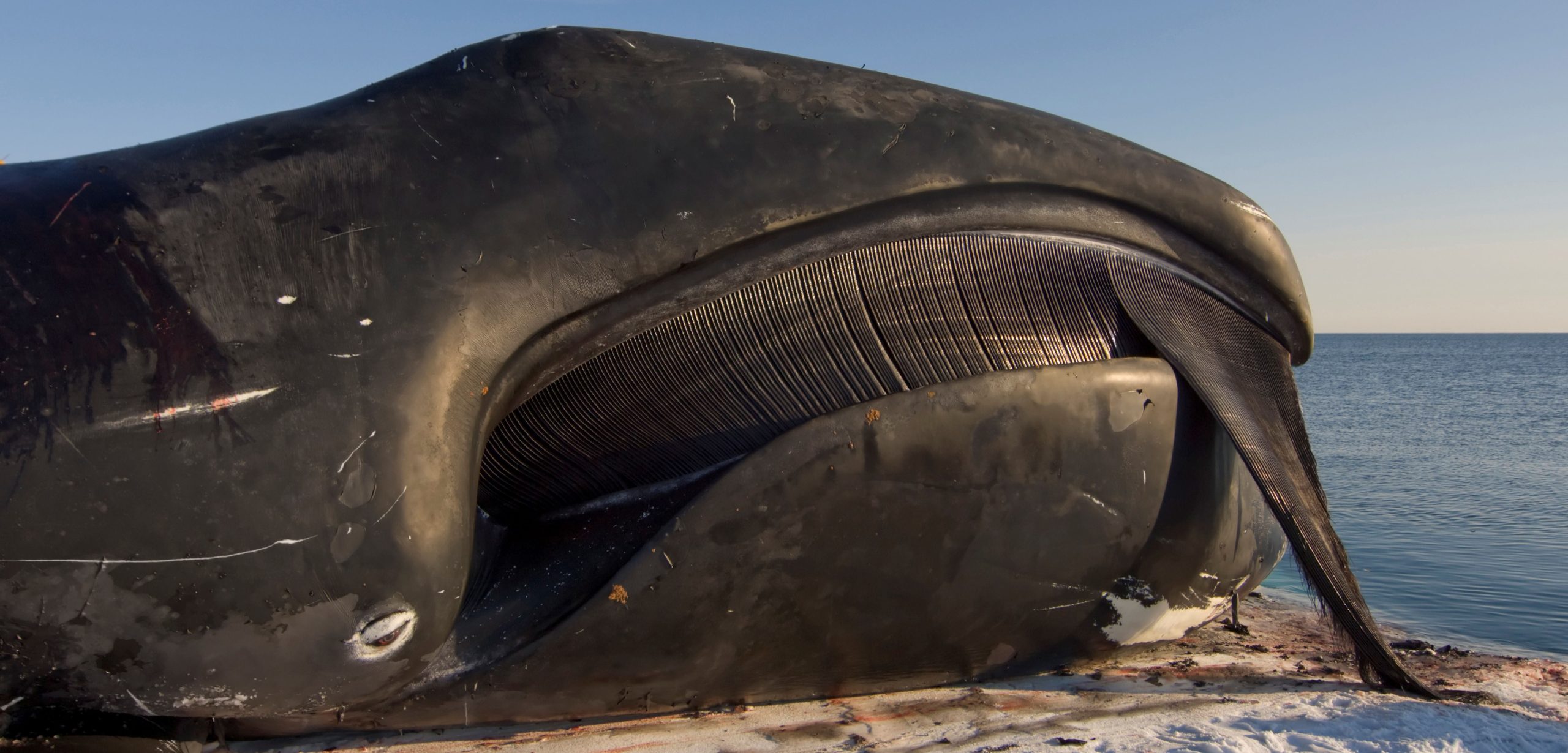The Evolutionary Trick that Lets Bowhead Whales Grow So Big
Young bowhead whales may deconstruct their own bones to help fuel the growth of their huge baleen.
Article body copy
A bowhead whale is made for eating. The creature’s eponymous, scoop-shaped head takes up an entire third of its body. Lining its upper jaw are 640 baleen plates: thin, flexible pieces of keratin with a bristly fringe it uses to sieve food from the sea. These plates, which can grow to nearly three meters long, are huge even for a leviathan.
But to grow such massive bodies, bowhead whales must circumvent an evolutionary catch-22. Like other baleen whales, bowheads feed by filtering seawater through their baleen plates, trapping about two tonnes of zooplankton each day. But when they’re young, bowhead whale baleen is too small to filter more than a fraction of the food the animals require. To grow, the whales need massive amounts of food, but to filter enough zooplankton, they need to be large.
How bowhead whales dodged this trap is the subject of a novel hypothesis by a group of biologists led by Barrow, Alaska wildlife official John C. George and Northeast Ohio Medical University biologist J. G. M. (Hans) Thewissen.
When bowheads are first born, they grow all the fat they need to keep warm in the frigid Arctic Ocean thanks to milk from their mothers. But after weaning, they must fend for themselves. Yet their small baleen plates do not allow them to capture enough food to nourish their growing bodies. To get around this problem, George, Thewissen, and their colleagues suggest that the whales might do something extreme: they steal nutrients from elsewhere in their bodies, and funnel them into the growth of their massive baleen plates.
The scientists got their idea after seeing how North American indigenous Iñupiat and Yup’ik hunters from along the shores of the Bering, Chukchi, and Beaufort Seas in Alaska, use the ribs of one-year-old bowheads to weigh down their fishing nets. The hunters choose the ribs from such young whales because they’re heavy—heavier, even, than ribs from older and much larger whales.
Working with Alaskan indigenous communities, who are permitted by the US government to take a limited number of whales each year, the researchers studied the corpses of eight freshly harvested bowhead whales that ranged from young juveniles to mature adults to investigate how their bodies change with age.
They found that between their first and fifth birthdays, bowhead whales stop growing in length, an unusual circumstance for a young mammal. Their ribs become lighter during those years as they lose bone density. The researchers believe that the calcium and other nutrients stored in those rib bones gets siphoned off and used to provide the building blocks for their baleen. Eventually, the whale has large enough baleen to feed efficiently and its body can once again begin to grow.
It’s tough to know how common this growth pattern is among other baleen whales, such as humpbacks and blues, because it’s just so difficult for biologists to access intact, healthy individuals from different age groups. But such patterns are not unheard of in the animal kingdom. Male deer, for example, are known to usurp resources locked in their bones to regrow their antlers each season. But in bowheads the phenomenon is more extreme than anyone might have expected.
“Living in a very extreme environment requires extreme adaptations, and the mammalian body is able to provide [them],” says Thewissen.

